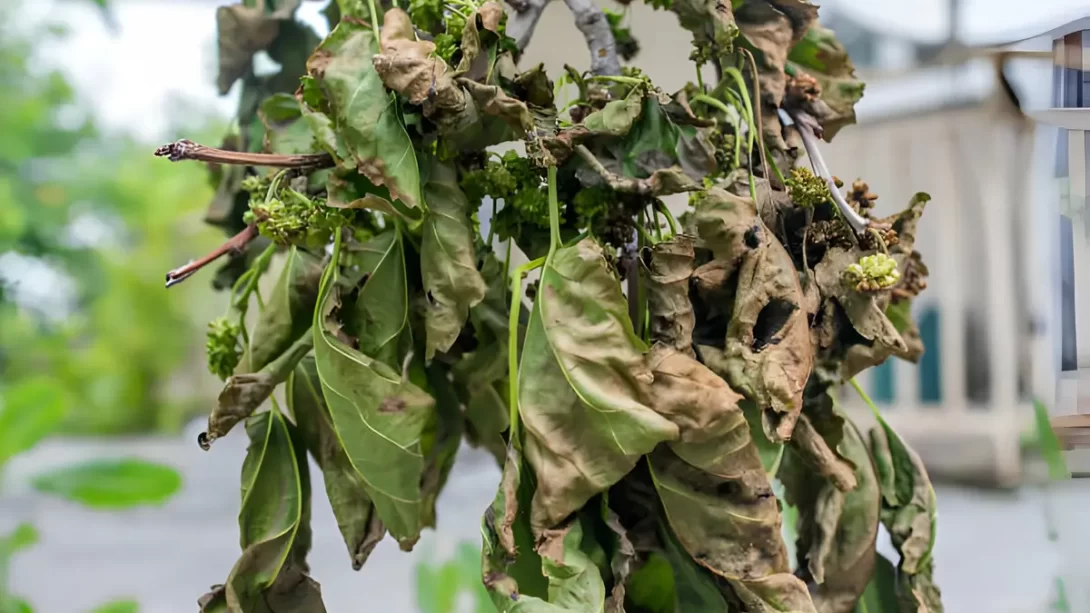Trees are vital to our environment, offering beauty, shade, and habitat for wildlife. They also play a crucial role in our gardens and landscapes. However, trees can become stressed or diseased, leading to decline and potentially death. Recognizing the signs of a tree in distress is the first step in saving it. This guide will walk you through the steps to diagnose and potentially revive a dying tree, giving it the best chance at recovery.
Identifying the Problem
The ability to spot a dying tree early can make all the difference in its survival. Key indicators include significant leaf loss, discoloration of leaves or bark, peeling bark, and a noticeable lack of growth or reduction in vigor. To assess the health of a tree, conduct a visual examination of its leaves, branches, trunk, and roots, if visible. Look for signs of disease or pest infestation, such as unusual growths, holes, or sawdust-like material. A simple test is to scratch a small piece of bark from a few twigs. If they are green and moist underneath, the tree is still alive; if they are dry and brown, the tree is in trouble.
Common Causes of Tree Decline
There are several factors that can contribute to a tree’s decline. Diseases, ranging from fungal infections to bacterial growths, can significantly damage a tree. Pest infestation, such as borers or beetles, can also cause severe stress or death. Environmental stress, including drought, flooding, or extreme temperatures, plays a significant role in tree health. Poor soil conditions, like compacted soil, poor drainage, or nutrient deficiencies, can affect a tree’s ability to grow and thrive. Understanding the specific cause of the decline is crucial for effective treatment.
Initial Steps in Tree Recovery
When attempting to revive a dying tree, some initial steps can be crucial. Firstly, ensure the tree is adequately watered. Over-watering or under-watering can both stress a tree. Create a watering schedule that keeps the soil moist but not waterlogged. Mulching around the tree can help retain moisture and regulate soil temperature but keep the mulch a few inches away from the trunk to prevent rot.
Pruning is another vital step. Remove dead, diseased, or damaged branches to prevent further decay and encourage new growth. It’s important to prune correctly to avoid additional stress on the tree. Use clean, sharp tools and make cuts at a 45-degree angle away from the bud.
Adjusting the soil conditions can also be beneficial. Test the soil for nutrient content and pH level. Trees often struggle in soil that is too acidic or alkaline, or that lacks essential nutrients. Based on the test results, you may need to modify the soil using lime (to reduce acidity) or sulfur (to increase acidity), and add appropriate fertilizers to address nutrient deficiencies.
Advanced Care Techniques
In cases where the tree is significantly stressed or diseased, more advanced care techniques may be necessary. If the tree is nutrient-deficient, a slow-release fertilizer appropriate for the tree species may be required. Be cautious with fertilizer use, as over-fertilization can harm the tree.
For pest and disease control, start with natural treatments like neem oil or insecticidal soaps, which are less harmful to the environment. If these methods are ineffective, you may need to resort to chemical treatments. Always follow the product instructions carefully and consider the impact on beneficial insects and the surrounding ecosystem.
Proper drainage and aeration are crucial for root health. If the soil is compacted, gently aerate around the tree’s base to allow air and water to penetrate the root zone. Be careful not to damage the roots in the process.
Professional Assessment and Intervention
If the tree’s condition does not improve, or if you are unsure of the correct course of action, it’s time to call in a certified arborist or tree care professional. These experts can provide a detailed assessment, diagnose the problem accurately, and recommend specific treatments. They might suggest interventions like deep root fertilization, pest control injections, or even cabling and bracing for structurally weak trees.
Understanding when to seek professional help can be critical. A professional can also advise you if the tree is beyond saving and if removal is the safest option, especially if the tree poses a risk to property or people.
Long-Term Tree Care and Prevention
Ensuring the long-term health of your tree requires consistent and preventive care. Regular watering, especially during dry spells, is essential. However, it’s important to avoid over-watering, which can lead to root rot. Implement a watering schedule tailored to your tree’s needs and local climate conditions.
Mulching is beneficial but should be done correctly. Apply a 2-3 inch layer of organic mulch around the tree’s base, extending out to the drip line. Avoid piling mulch against the trunk, as this can encourage pests and diseases. Mulch helps retain soil moisture, suppresses weeds, and improves soil quality as it breaks down.
Regular pruning is key to maintaining a tree’s health and structure. Remove dead or diseased branches, thin out dense canopy areas to improve air circulation, and cut away any branches that are rubbing together. However, avoid heavy pruning as it can stress the tree. The best time to prune is generally in late winter or early spring, although this can vary depending on the tree species.
Fertilization should be done judiciously. Conduct soil tests every few years to determine nutrient needs. Use fertilizers formulated for your specific type of tree and follow the recommended application rates and schedules.
Monitoring your tree for signs of stress or disease is crucial. Early detection of problems such as changes in leaf color, unusual leaf drop, or visible damage to bark and branches can allow for prompt intervention. Regularly inspect your tree from top to bottom, including the underside of leaves and the condition of the bark.
Conclusion
Saving a dying tree is a challenging yet rewarding endeavor. It involves understanding the signs of distress, taking immediate action to address potential problems, and implementing long-term care strategies. Remember, each tree is unique, and what works for one may not work for another. Regular monitoring, maintenance, and preventive care are the keys to a healthy tree.
Don’t hesitate to seek professional advice when needed. Arborists and tree care specialists can offer invaluable guidance and intervention. Trees are not just beautiful; they are vital to our environment and contribute significantly to our quality of life. By investing time and care into your trees, you not only enhance your immediate surroundings but also contribute to the health of our planet.
With these steps and considerations, you’re equipped to give your trees the best chance at a long, healthy life. Whether you’re dealing with a single tree in your backyard or multiple trees on a larger property, your efforts in tree care and preservation are incredibly valuable.



